First issue of the year 2025, January-June
Jacquard N°95
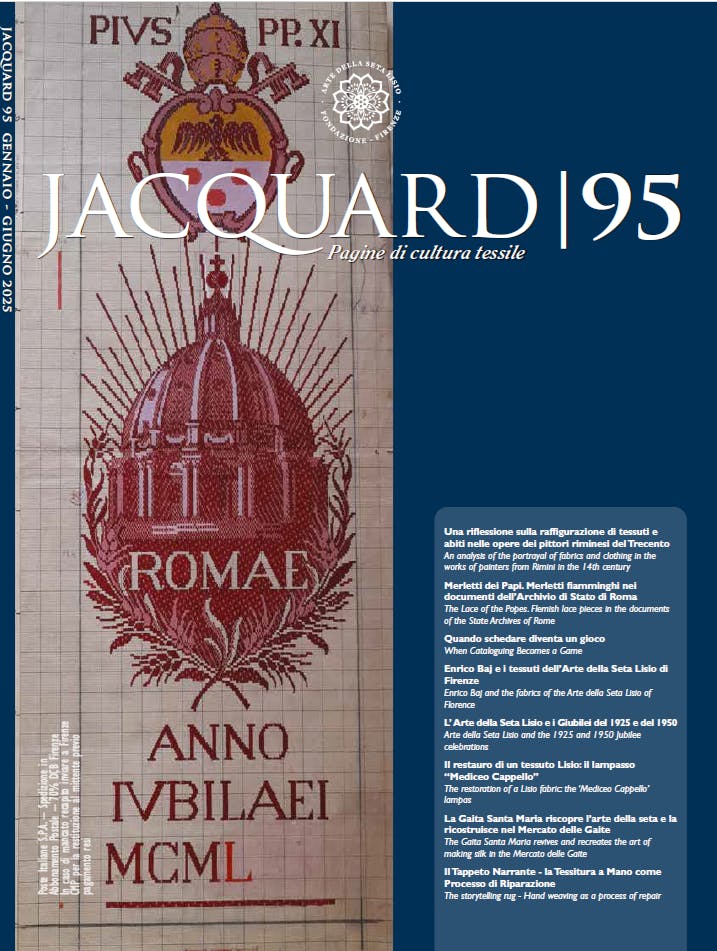
Jacquard 95
In issue no. 95, we present a study by one of our young collaborators, who examines the works of the Rimini School of Painters from the 14th century. The study focuses, in particular, on the depiction of fabrics and clothing styles, offering valuable insight into that era.
The news of the discovery of samples of Flemish lace pieces in the documents of the State Archives of Rome is highly significant. Some are currently on show in Bruges.
We then make direct contact with the fabric of the Arte della Seta Lisio recognised in the works of the artist, Enrico Baj, who used it to create a continuous play on cross-references between the backgrounds and bodies of the figures depicted. This also appears in the graph paper patterns commissioned by Giuseppe Lisio for the 1925 Jubilee, as well as in the subsequent modification commissioned by his daughter Fidalma for the 1950 Jubilee, and in the report on the restoration of a ‘Mediceo Cappello’ lampas.
The Gaita Santa Maria brings to life a page of everyday medieval life during Il mercato delle Gaite in Bevagna, giving us the opportunity to witness the reconstruction of a cycle of silk production from the cultivation of the silkworms to the weaving.
Lastly, we feature an important project that allows you to explore textile materials more closely and use them to express yourself, contributing to a collective creation through weaving.
Articles
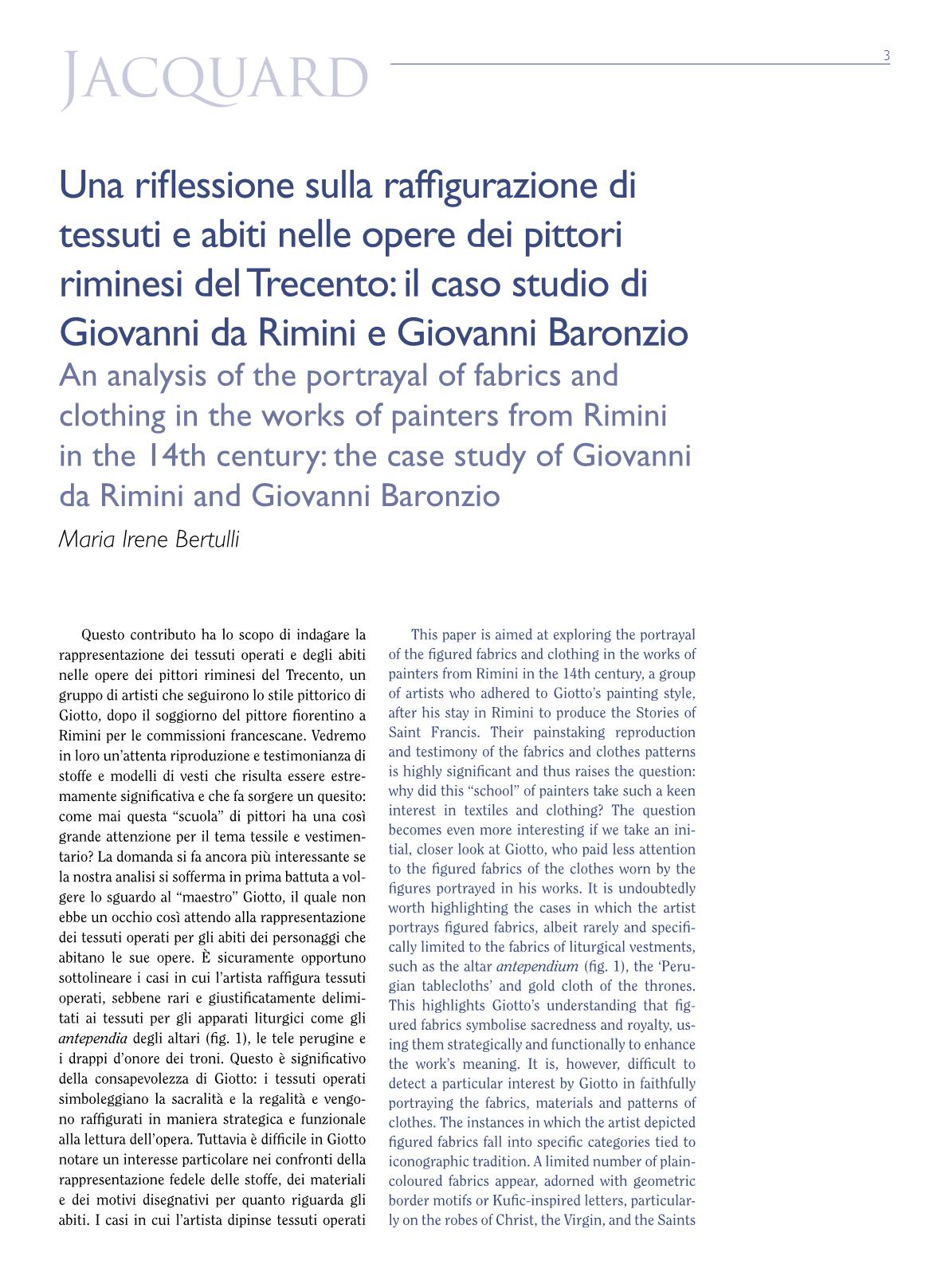
A reflection on the depiction of fabrics and clothing in the works of Rimini painters of the fourteenth century: the case study of Giovanni da Rimini and Giovanni Baronzio
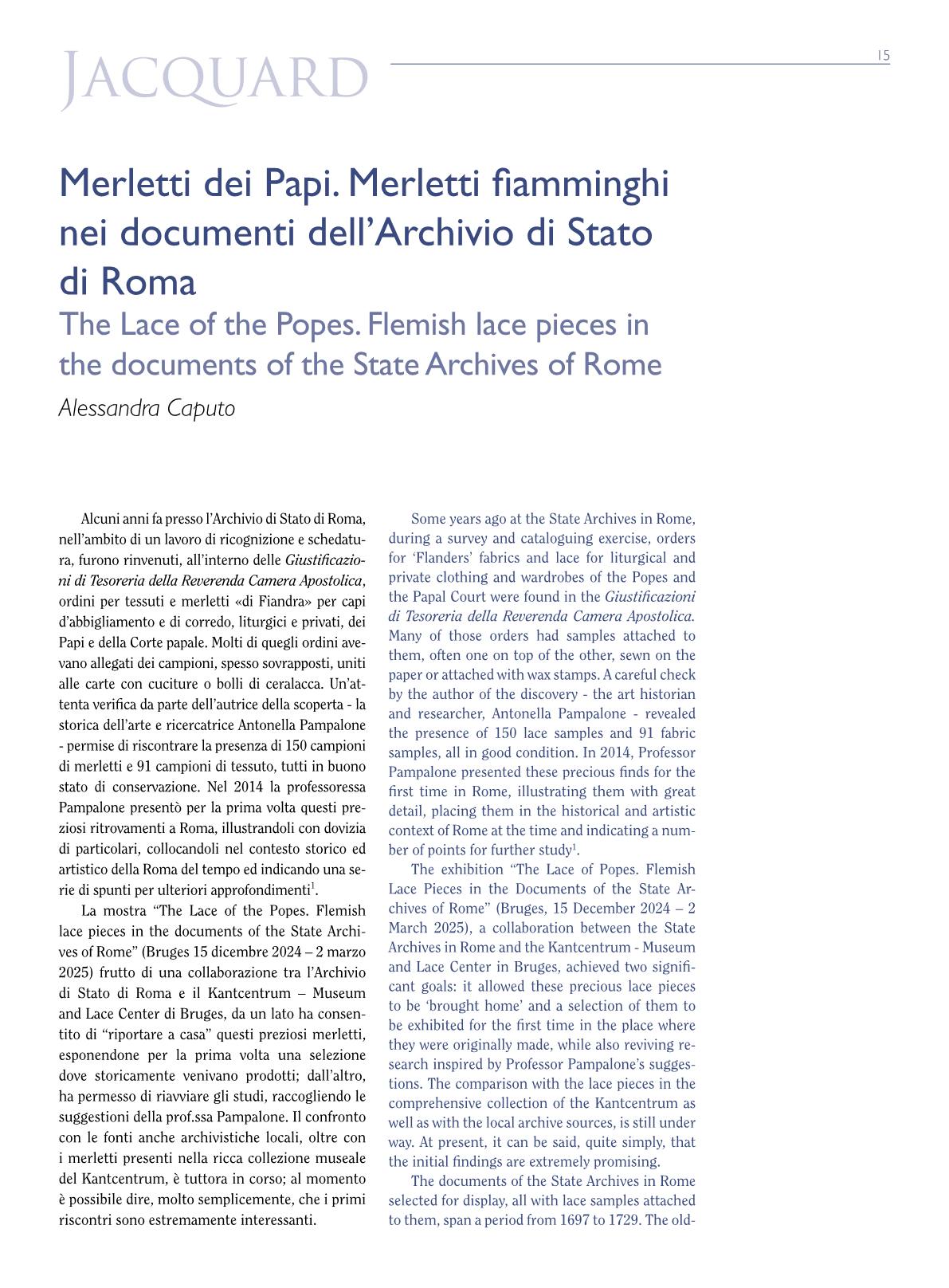
The Lace of the Popes.Flemish lace pieces in the documents of the State Archives of Rome
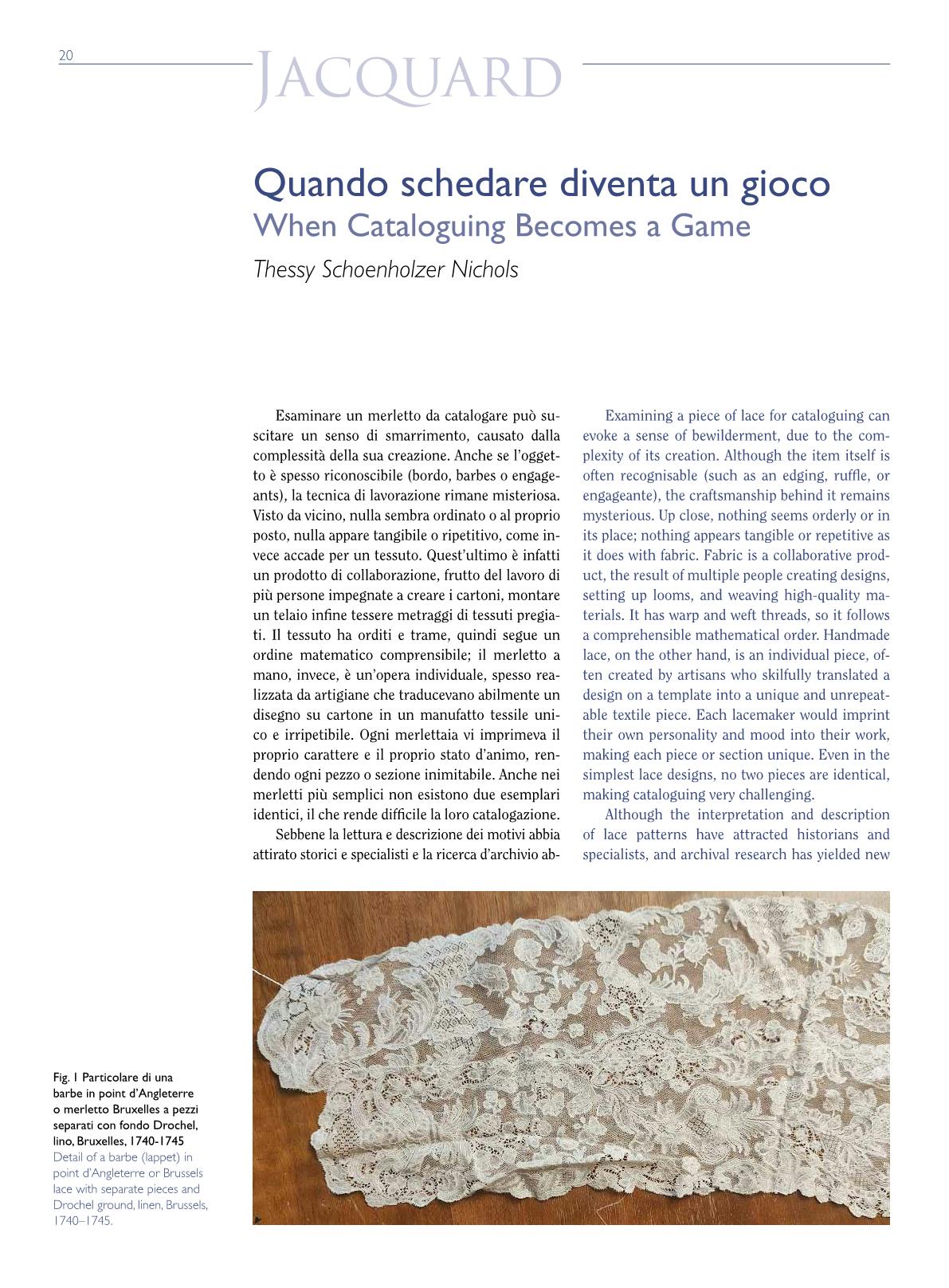
When Calaloguimg Becomes a Game
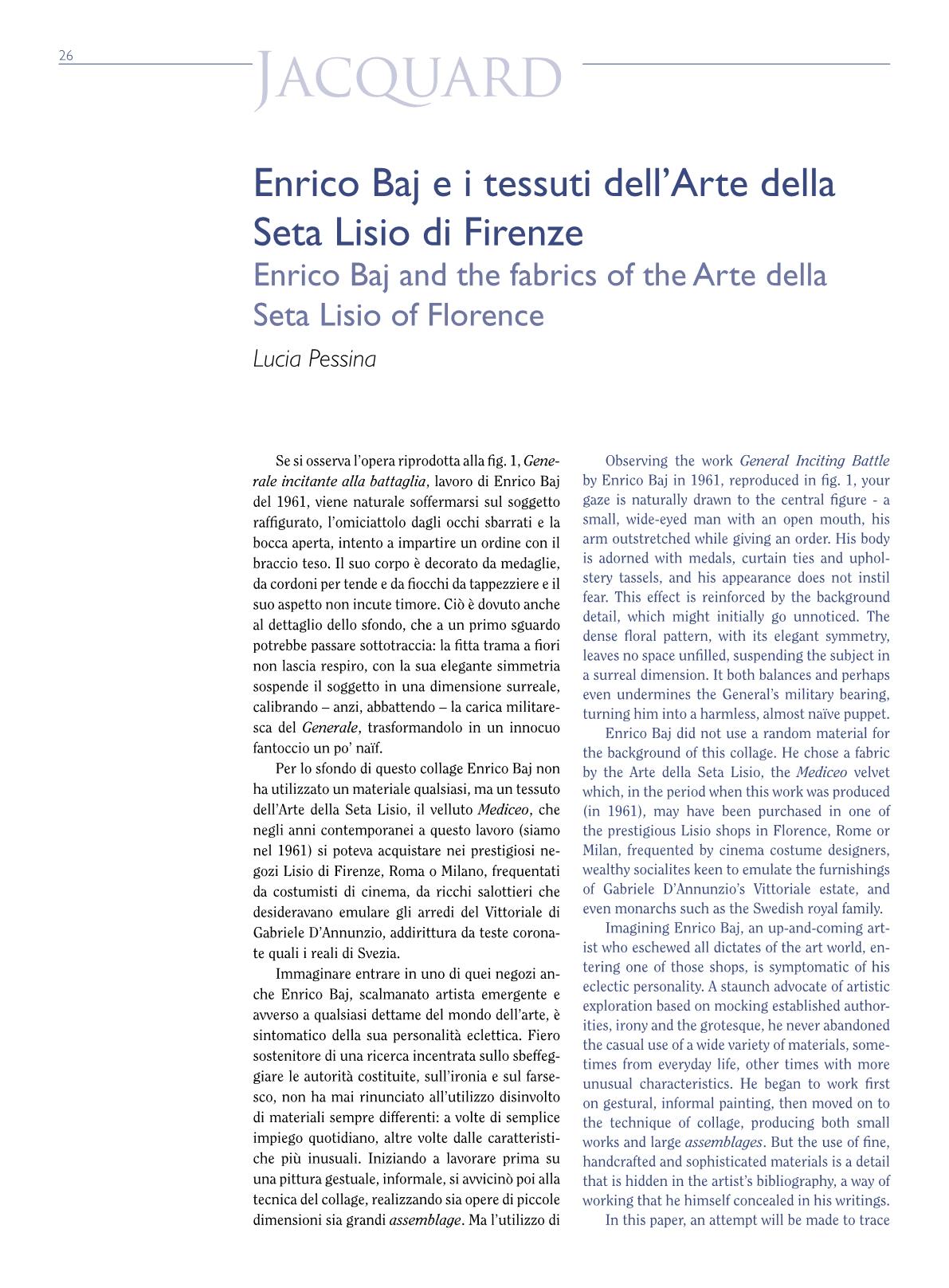
Enrico Baj and the fabrics of the Lisio Silk Art

Arte della Seta Lisio and the 1925 and 1950 Jubilee celebrations

The restoration of a Lisio fabric: the "Medico Cappello"lampas
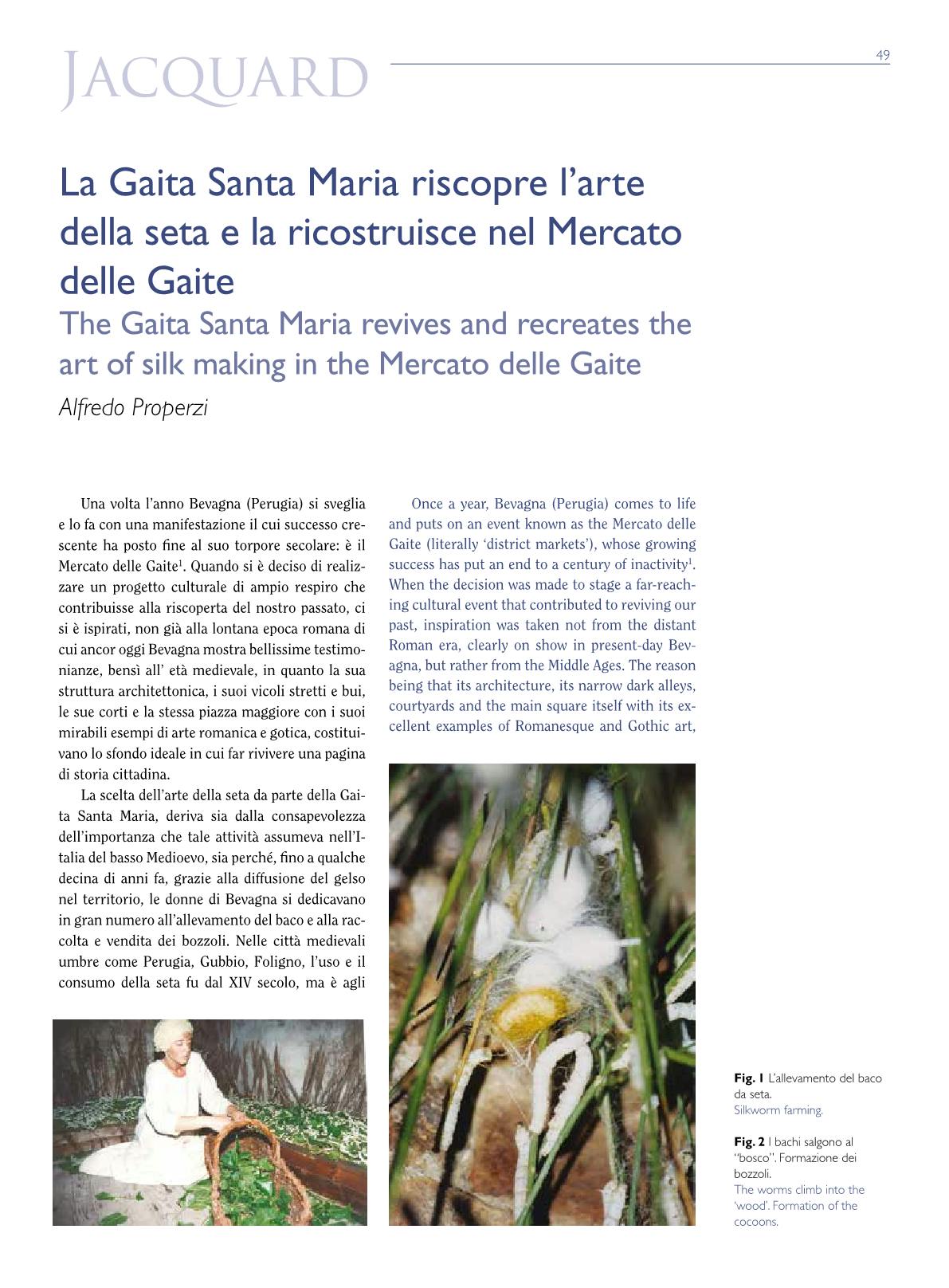
The Gaita Santa Maria revives amd recreates the art of silk making in the Mercato delle Gaite



